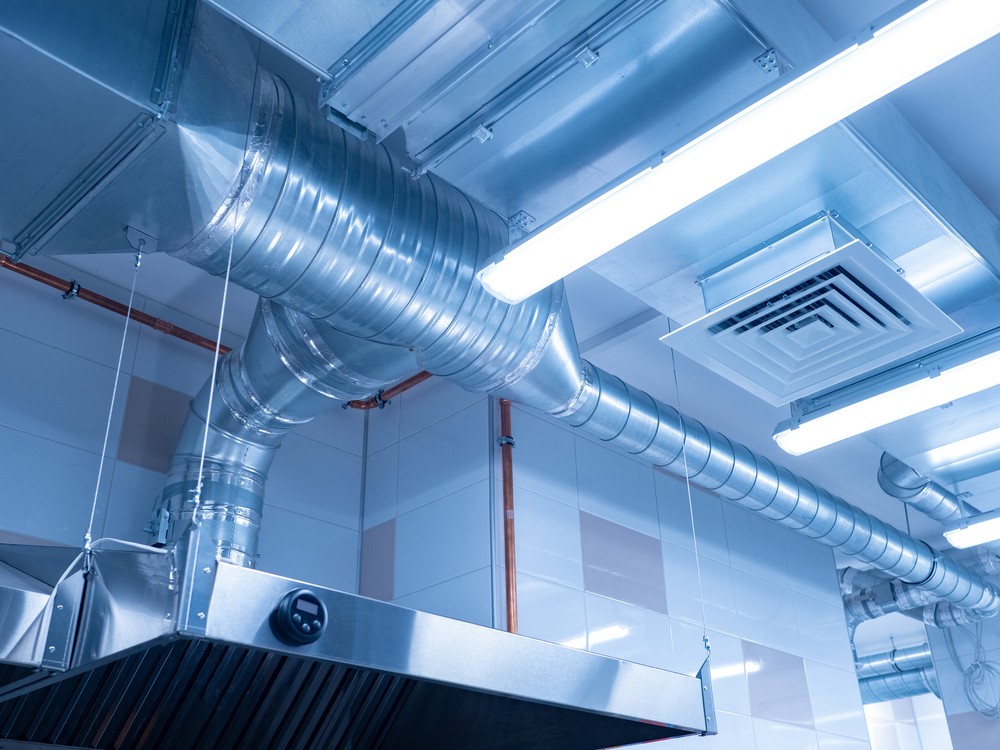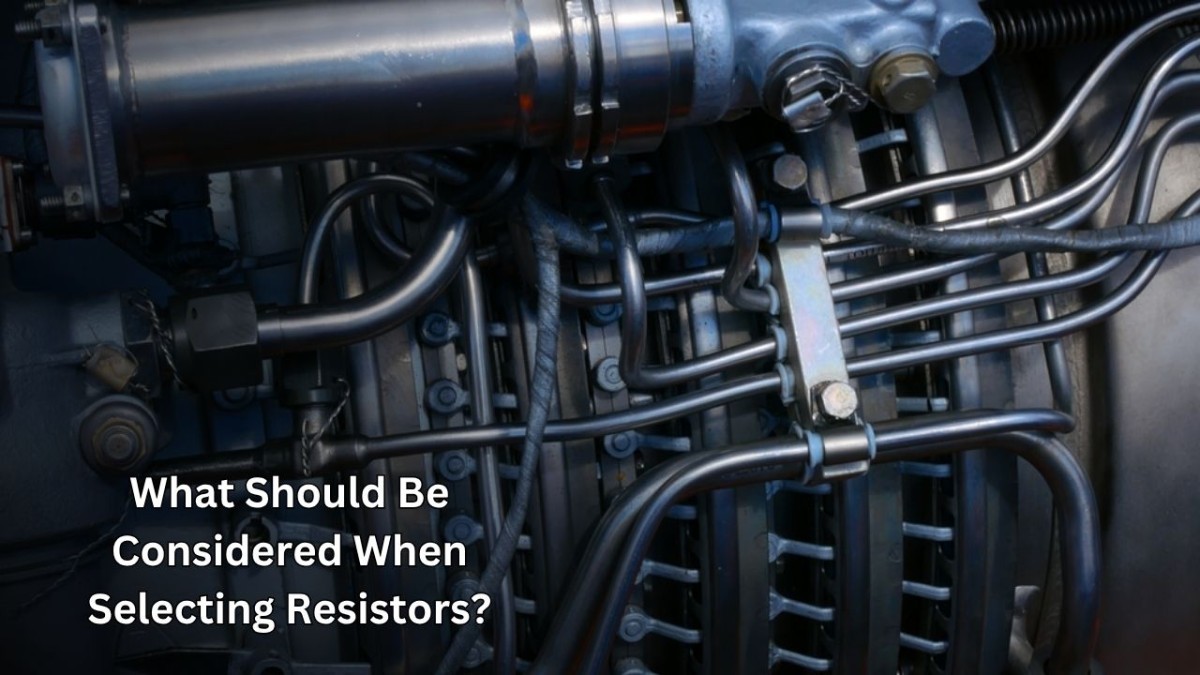
Use of Artificial Intelligence in Industrial Cooling Systems in 2025


In industrial systems, the types of resistance used directly affect heating efficiency and product performance. An incorrectly selected resistance can lead to both energy loss and early device failure. Therefore, paying attention to the right criteria ensures long-lasting and reliable use. Günay Soğutma provides professional guidance to help businesses make the right choice.
1. Power and Wattage
The resistance power should be determined according to the device’s needs. Choosing a lower wattage than required results in insufficient heating, while too high wattage increases energy consumption and may damage the system.
2. Material Quality
The resistance material is crucial for long-lasting use. Stainless steel and nickel alloys are among the most preferred options due to their durability against high temperatures.
3. Operating Environment
The selected resistance type should be suitable for the application area. Water-resistant models are preferred in humid environments, while ceramic-coated options are ideal for processes requiring high temperatures.
4. Energy Efficiency
Modern energy-efficient resistance solutions offer cost advantages for businesses. These products are both environmentally friendly and economically beneficial in the long run.
5. Service and Spare Parts Support
Every resistance selection should also be evaluated based on after-sales support. Günay Soğutma provides businesses with reliability through strong service networks and high-quality spare parts.
Considering these expert-recommended criteria, the right resistance selection extends the device’s lifespan and increases production efficiency for businesses.
Resistance, used in areas ranging from industrial production to household devices, plays a critical role in the efficient operation of systems. Incorrect resistance selection can lead to energy losses, reduced device lifespan, and higher production costs. Therefore, it is essential to follow certain criteria recommended by experts. Günay Soğutma is one of the brands that guide businesses in making informed choices.
1. Determine the Power Requirement
The resistance power must match the needs of the device or system in which it will be used. Too little power leads to insufficient heating, while excessive power increases energy consumption.
2. Pay Attention to Material Selection
The resistance material should be carefully chosen for durability. Stainless steel or heat-resistant alloys ensure long-lasting use.
3. Analyze the Operating Environment
Water-resistant resistance should be preferred in humid environments, while ceramic-coated resistance is suitable for high temperatures. Choosing the right type for the environment prevents failures.
4. Prioritize Energy Efficiency
Energy-efficient resistance solutions are both environmentally friendly and economical. They provide significant cost advantages, especially for continuously operating systems.
5. Consider Ease of Installation
Proper resistance selection should also offer easy maintenance and installation. Difficult-to-install products waste time and reduce operational efficiency.
6. Compliance with Standards
Resistance models that comply with international standards are important for safety. Such products minimize risks like fire and overheating.
7. After-Sales Support
A resistance selection involves not only the product but also reliable support services. Günay Soğutma provides businesses with an advantage through strong service networks and spare parts support.
By following these golden rules, selecting the right resistance extends the device’s lifespan and maximizes efficiency in production processes.
Mistakes made during the resistance selection process can reduce device performance and lead to additional costs for businesses. In particular, incorrect material choice, improper sizing, or selecting products unsuitable for the intended application are among the critical errors that shorten system lifespan. Therefore, it is crucial to understand the key factors during resistance selection.
One of the most common mistakes is choosing a resistance that does not meet the temperature requirements of the application. For example, while industrial machines require higher durability, such strength may not be necessary for household applications. Selecting a resistance with the wrong power or quality increases energy consumption and poses safety risks.
Another mistake is ignoring the product’s installation and connection requirements. Instead of focusing solely on the price during resistance selection, it is essential to consider installation ease, connection compatibility, and maintenance needs. Otherwise, failures may occur shortly after installation, negatively affecting system efficiency.
Energy efficiency is another commonly overlooked aspect. Resistance made from low-quality materials or with insufficient insulation leads to higher energy consumption, increasing long-term operational costs. Brands that offer energy-efficient solutions stand out as the right choice. Products from reliable companies like Günay Soğutma provide both durability and energy savings.
Another frequent mistake is choosing resistance with unsuitable form and size for the application. A wrongly sized resistance can disrupt the device’s heating balance and cause overloading. This increases the risk of breakdowns and can lead to unplanned downtime costs for businesses.
The most effective way to avoid these mistakes is to consult experts and work with reliable suppliers. Making resistance selection decisions without proper technical knowledge can result in higher long-term costs. Therefore, professional consultation makes the selection process far more efficient.

Resistance types vary according to sectoral needs, with each type serving a specific application. When chosen correctly, these products improve both performance and energy efficiency across a wide range of applications—from household appliances to industrial machinery. However, incorrectly selected resistance can shorten the lifespan of devices and lead to additional costs.
One of the most common types is the tubular resistance, which is widely used in industrial heating systems due to its durability against high temperatures. Offering various sizes and diameters, it is ideal for ovens and large heating units. However, using it in smaller devices may not be efficient.
Band resistance is commonly used in plastic injection machines and industrial molding applications. It provides rapid heating and energy efficiency, making it a preferred choice. Its ease of installation also adds to its appeal. However, if not of high quality, it may deform under intense workloads.
Another option, the ceramic resistance, stands out for its ability to provide uniform heat distribution. These products perform consistently at both low and high temperatures and are used in a wide range of applications, from household appliances to industrial processes. However, selecting a ceramic resistance with the wrong capacity can lead to excessive energy consumption.
Immersion resistance types excel in heating liquids such as water, oil, or chemicals. They provide fast and efficient results and are widely used in industrial tanks and boiler systems. Here, material quality is crucial, as low-quality options can lead to corrosion and early failure.
Each sector and application may require a different resistance type. At this point, the wide product range offered by reliable brands like Günay Soğutma makes it easier to find the most suitable solution. Professional support in the selection process is critical for ensuring long-lasting and safe use.
In 2025, the use of different resistance types in industrial production processes has become critical for efficiency and energy management. Proper resistance selection helps reduce production costs and extend the lifespan of devices. Therefore, businesses must pay attention to specific criteria when making their selection.
First, the appropriate resistance type for the intended application should be determined. For example, tubular resistance is more suitable for high-temperature industries, while immersion resistance is ideal for heating liquids. Choosing the wrong type can lead to energy waste and increased risk of malfunctions.
Another important criterion is energy efficiency. As energy costs continue to rise in modern production systems, it is essential to select products that deliver high performance with low consumption. Advanced ceramic resistance models provide advantages such as uniform heat distribution and energy savings.
Ease of installation is another crucial factor. Products such as band resistance save time in production processes thanks to their fast and practical installation, contributing to overall operational efficiency.
Material quality should not be overlooked. Durable resistance models made of stainless steel reduce long-term maintenance and replacement costs. Therefore, businesses should opt for high-quality, reliable brands. Günay Soğutma is a leading company in this field, offering products that meet high industry standards.
Additionally, with the rise of digitalization in 2025, resistance solutions that can be integrated into automation systems are gaining attention. This allows for more precise temperature control, minimizing errors in production lines.
Resistance products used in industrial applications play a critical role in maintaining production continuity and efficiency. However, focusing solely on performance during selection is not enough. When making resistance selection, it is essential to balance safety, durability, and cost.
First, the safety factor must be considered. In high-temperature systems, the wrong product choice can lead to short circuits or fire hazards. Therefore, the chosen resistance models must comply with international safety standards and be made of high-quality, well-insulated materials. Moreover, businesses should select products that meet occupational safety regulations to mitigate potential risks in the long term.
Another critical factor is durability. Products prone to frequent failures or rapid wear disrupt production continuity. In this regard, resistance solutions made of stainless steel or ceramic bases provide long-lasting performance due to their durability at high temperatures. This criterion indirectly reduces costs for businesses engaged in high-volume production.
Finally, the cost factor must be taken into account. While cheaper products may seem advantageous in the short term, they often increase maintenance and replacement expenses in the long run. Therefore, a resistance selection that offers the best price-performance balance will be far more efficient for businesses. Günay Soğutma supports businesses in achieving this balance by offering cost-effective solutions without compromising on quality.
Considering the rising energy costs and increasing production demands in 2025, striking the right balance among different resistance types has become an important step for enhancing business competitiveness.

Fill out the form to discover the most suitable high-end products for your projects. Contact Us Now.